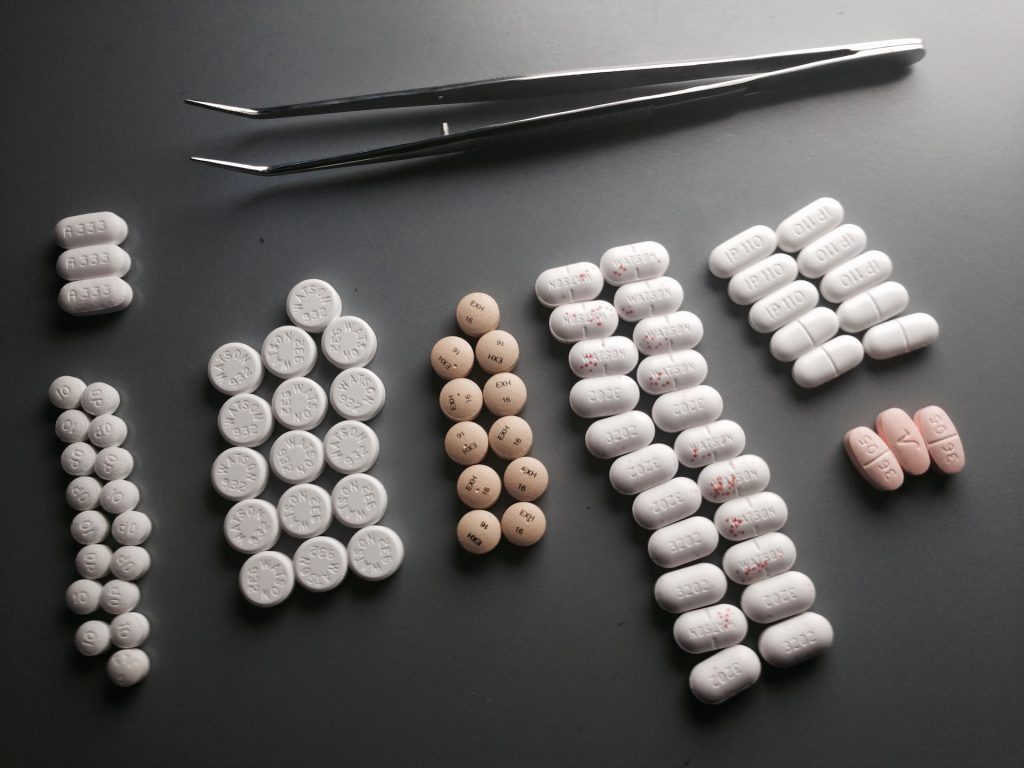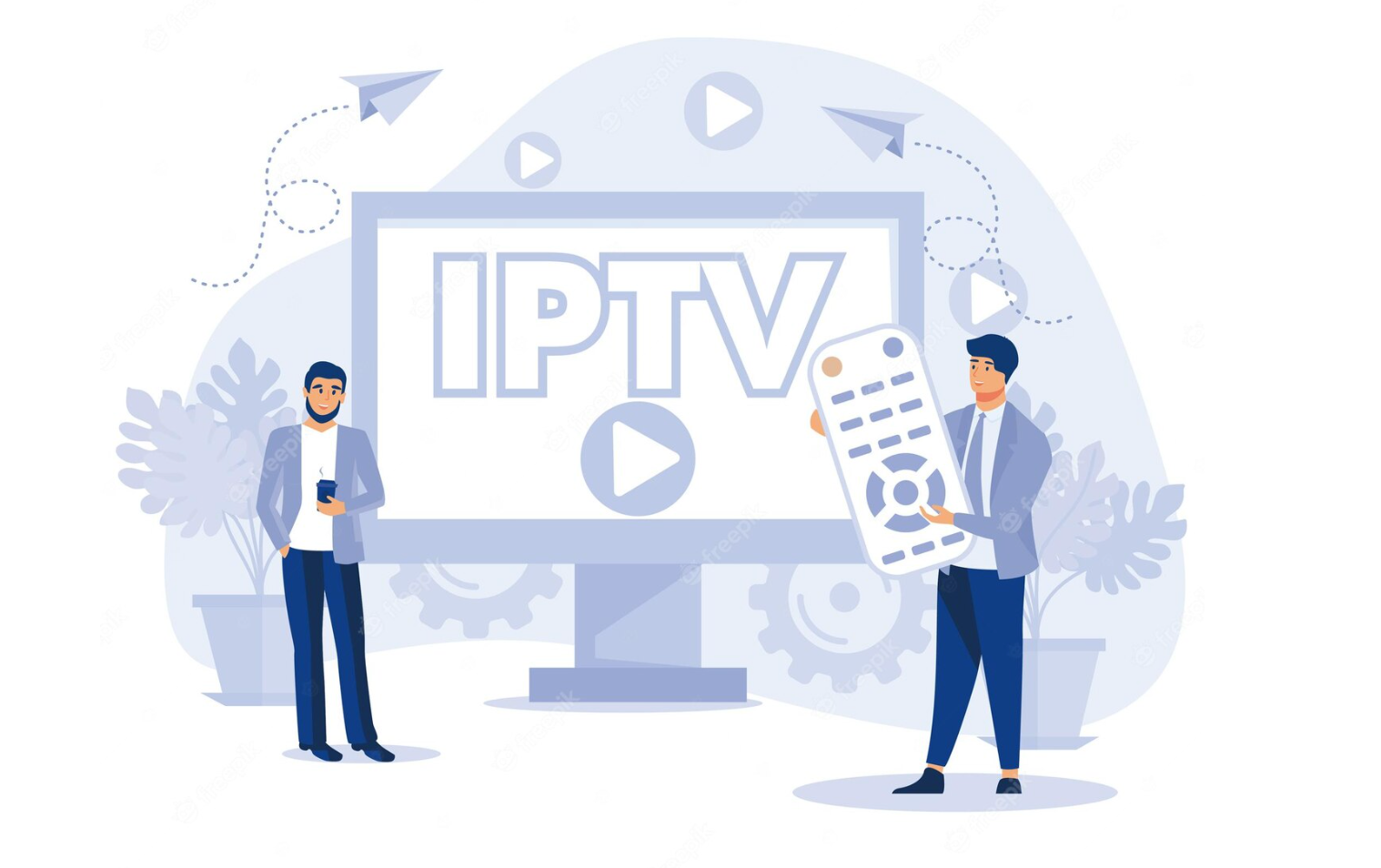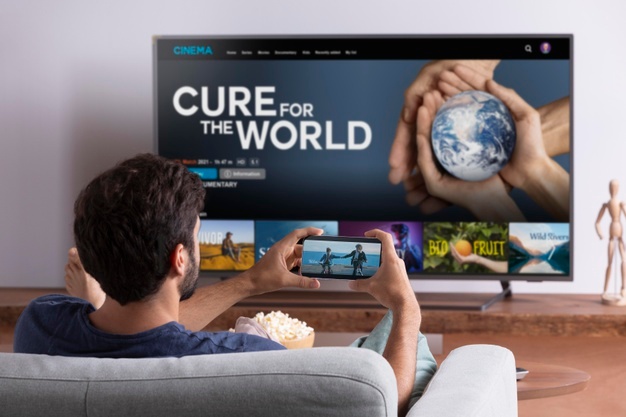Health
Pharmaceutical Research: the importance of European Investments for the healthcare field

Talking about the healthcare field means facing a multifaceted topic. These peculiar realms present, in fact, several shades which comprehend science and innovation at humans’ service. The healthcare field encompasses a vast spectrum of different disciplines, from medical breakthroughs and innovation to patient care. In the preferred sector, the main goal of companies, industries, and professionals have the common goal to protect human health. Behind such a prestigious curtain there is a machine that works extensively to pursue innovation. We are talking about pharmaceutical research.
Life-saving treatments, brand-new, innovative therapies, trials, investigations, and diagnoses wouldn’t exist without the constant effort made by researchers in finding out how to improve the healthcare processes with new pharmaceutical machinery and therapies. We must clarify, now – since every dice is multifaced – that so amazing efforts reachable in the healthcare fields and research cannot be acquired without a significant financial investment, useful to support the extensive studies made by professionals and maintain the infrastructures in which the research takes place, as well as support in the purchase of every tool and machine needed. Investors in healthcare research and development can come from various sources, including:
Sources Of Investors in Healthcare Research and Development

1. Government Funding
Governments allocate a significant amount of funds to support healthcare research. These funds are typically provided by agencies such as the National Institutes of Health (NIH) in the United States, the European Commission’s Horizon 2020 program, or similar government bodies in different countries.
2. Pharmaceutical and Biotechnology Companies
Pharmaceutical companies invest heavily in research and development (R&D) to discover and develop new drugs, therapies, and medical devices. These companies fund their own internal research programs and also collaborate with academic institutions and research organizations.
3. Academic Institutions
Universities and research institutions often receive funding from government grants, private foundations, and industry collaborations. These funds support both basic research and clinical trials conducted by researchers and scientists.
4. Venture Capitalists and Private Equity Firms
Venture capitalists and private equity firms invest in healthcare startups and companies that are developing innovative therapies, medical devices, or technologies. They provide capital in exchange for equity and aim to generate a return on their investment when the products or technologies are successfully commercialized.
5. Non-Profit Organizations and Foundations
Non-profit organizations and foundations, such as the Bill & Melinda Gates Foundation, the Wellcome Trust, and the Michael J. Fox Foundation, contribute significant funds to support healthcare research and development. These organizations focus on specific areas of research or medical conditions and aim to advance knowledge and improve patient outcomes.
The amount of money invested in healthcare research varies significantly depending on the source and purpose of the investment. Government funding can reach billions of dollars annually, while private investments from pharmaceutical companies, venture capitalists, and foundations can also be substantial. The overall investment in healthcare research and development is critical for advancing medical knowledge, improving patient care, and developing new life-saving treatments.
Due to these premises, the importance of European investments in pharmaceutical research cannot be underestimated. Europe is, in fact, one of the main stakeholders for medical innovation, and, in general, it has always been at the forefront of research in the healthcare field. The Continent presents a prestigious heritage and a historically famous commitment to the improvement of public health. For these reasons, it’s impossible for industries to give up on Europe as a funding source. In the next paragraphs, we are going, anyway, to find out what to know more about the importance of European investments in the healthcare field, also as a driving force for international finance.
What do European investments provide to pharmaceutical research?

European investments in the healthcare field have contributed significantly to medical innovation and research. With a €5.3 billion budget during the 2021-27 period, the EU4Health program is an unparalleled EU financial support in the health area. Among the EU Member States, Germany (12.8 %) and France (12.2 %) had the highest healthcare expenditure relative to GDP. Here are a few examples of notable research results and advancements.
1. COVID-19 Vaccines
European investments played a crucial role in the development and distribution of COVID-19 vaccines. The European Union’s (EU) Advance Purchase Agreements secured vaccine doses from multiple manufacturers, supporting the rapid development and availability of vaccines, such as those developed by Pfizer-BioNTech, Moderna, AstraZeneca, and Johnson & Johnson.
2. Cancer Research and Treatment
European investments have supported groundbreaking research in cancer diagnosis, treatment, and prevention. The development of targeted therapies, immunotherapies, and precision medicine approaches has improved outcomes for cancer patients. European researchers and institutions have made significant contributions in this field, including the discovery of new therapeutic targets and the development of innovative treatment strategies.
3. Rare Diseases
The EU’s Horizon 2020 program, for example, has funded research projects focused on rare diseases, enabling collaboration between researchers, healthcare professionals, and patient organizations. This investment has resulted in improved diagnostic techniques, the development of orphan drugs, and better support for patients with rare conditions.
4. Neurodegenerative Diseases
European investments have supported research on neurodegenerative diseases such as Alzheimer’s and Parkinson’s. Collaborative initiatives like the Innovative Medicines Initiative (IMI) have facilitated public-private partnerships to accelerate the discovery and development of new therapies. European researchers have made significant contributions to understanding disease mechanisms, identifying potential drug targets, and conducting clinical trials for novel treatments.
5. Medical Imaging and Diagnostics
For example, European researchers have developed new imaging modalities, such as PET/MRI and molecular imaging techniques, that enhance the accuracy and precision of disease diagnosis. Investment in diagnostic innovations has improved patient outcomes by enabling early detection and personalized treatment approaches.
These examples demonstrate the important role that European investments have played in fostering medical research, promoting innovation, and improving patient care. Europe’s commitment to public health and its emphasis on scientific collaboration and funding has been instrumental in driving advancements in the healthcare field, benefiting not only the continent but also contributing to international medical progress.
For sure Academic Research Institutions, Pharmaceutical and Biotechnology Companies, Collaborative Research initiatives, and in general help pharmaceutical research in the discovery and development of innovative treatments and drugs. European investments in healthcare research also provide professionals in the field with everything they need to develop new therapies for rare diseases, like potential therapeutic targets and developing innovative treatment approaches, such as those described above.
The financial importance of European investments in the pharmaceutical research
European investments in pharmaceutical research are also a signal of economic growth and a tool for innovation, by helping create employment opportunities and nurturing a flourishing biotech and pharmaceutical industry. Jobs for scientists, researchers, technicians, clinical trial coordinators, regulatory affairs specialists, and other professionals in the industry.
When institutions support research, they also encourage entrepreneurship. In this way, European investments get to be considered a pivotal instrument for generating a thriving healthcare ecosystem, making its results transform in the general growth of the welfare of the involved nations. In conclusion, we can agree that, even though the healthcare field encompasses a multitude of complexities, its potential can be unlocked in a much easier way with the support of a powerful stakeholder like Europe.

Food & Drinks
25 Benefits of Using Low-Calorie Biscuits for Weight Loss

If you’re on a weight loss journey, you might think that delicious biscuits are off-limits. However, that’s not entirely true. Low-calorie biscuits offer a tasty and satisfying alternative that can help you shed those unwanted pounds without compromising on flavor. In this comprehensive guide, we will explore the various benefits of using low-calorie biscuits for weight loss. From their nutritional value to their impact on your overall health, we’ll cover everything you need to know to make informed choices in your quest for a healthier lifestyle.
What Does Mean By Low-Calorie Biscuits?

Low-calorie biscuits are a type of baked snack or treat that contains fewer calories compared to traditional biscuits or cookies. These biscuits are designed to be a healthier alternative for those who are conscious of their calorie intake or trying to manage their weight. They are often made using ingredients that are lower in fat, sugar, and overall calories.
The exact calorie content can vary depending on the specific recipe and ingredients used, but low-calorie biscuits typically contain less added sugar, fat, and processed ingredients. Some common substitutions to reduce calories include using whole-grain flour instead of refined flour, using healthier fats or reducing the amount of fat, using natural sweeteners or reducing the sugar content, and adding fiber-rich ingredients like oats or bran.
It’s essential to remember that even though these biscuits are lower in calories, they should still be enjoyed in moderation as part of a balanced diet. Always check the nutrition label or recipe to understand the exact calorie content and other nutritional information. Low-calorie biscuits for Instant weight loss can be a suitable option for people who want to indulge in a treat while being mindful of their calorie intake.
Benefits of Using Healthiest Low-Calorie Biscuits for Instant Weight Loss

1. Lower Calorie Intake, Same Great Taste
Low-calorie biscuits are designed to provide you with the same delicious taste without the excess calories. By opting for these biscuits, you can indulge in your favorite treat guilt-free. They are carefully crafted to satisfy your cravings while keeping your calorie intake in check.
2. Sustained Energy Release
Unlike sugary and high-calorie snacks that lead to energy spikes and crashes, Healthiest low-calorie biscuits offer a more sustained release of energy. They contain complex carbohydrates and fiber, which keep you feeling full and energized for longer periods, helping you avoid those midday hunger pangs and unnecessary snacking.
3. Support Weight Loss Goals
Incorporating low-calorie biscuits into your diet can be a strategic move towards achieving your weight loss goals. By replacing high-calorie snacks with these healthier alternatives, you can create a calorie deficit that promotes weight loss. Remember, a balanced diet and regular exercise are essential for successful weight management.
4. Portion Control Made Easier
When trying to lose weight, portion control is key. Low-calorie biscuits are often individually packaged, making it easier for you to manage your serving sizes. This prevents mindless overeating and helps you stay on track with your calorie goals.
5. Nutrient-Rich Ingredients
Many low-calorie biscuits are fortified with essential nutrients such as vitamins, minerals, and fiber. These nutrients contribute to overall health and can help you meet your daily nutritional requirements while on a calorie-restricted diet.
6. Versatility in Diet Planning
Low-calorie biscuits can fit into various diet plans, whether you’re following a low-carb, high-protein, or balanced approach. Their flexibility allows you to integrate them seamlessly into your existing meal plans and still achieve your weight loss objectives.
7. Convenient On-the-Go Snack
Maintaining a healthy diet while on the go can be challenging, but low-calorie biscuits provide a convenient solution. They come in individual packs that you can easily toss into your bag for a quick and nutritious snack when you’re away from home.
8. Encourages Mindful Eating
When you consciously choose the Healthiest low-calorie biscuits as part of your weight loss journey, it encourages mindfulness about your food choices. Being aware of what you eat fosters a positive relationship with food and helps you make healthier decisions in the long run.
9. Supports Blood Sugar Management
For individuals concerned about blood sugar levels, low-calorie biscuits can be a favorable option. Their controlled carbohydrate content helps stabilize blood sugar levels, which is beneficial for diabetics and those aiming to prevent blood sugar spikes.
10. Boosts Metabolism
Some low-calorie biscuits are formulated with ingredients that can boost metabolism. For instance, biscuits containing green tea extract or cayenne pepper can help increase your metabolic rate, aiding in weight loss efforts.
11. Encourages Hydration
Certain low-calorie biscuits incorporate hydrating ingredients like fruits or natural fruit extracts. This encourages you to consume more fluids and stay adequately hydrated throughout the day, which is vital for overall health and weight management.
12. May Improve Digestion
Some low-calorie biscuits contain prebiotic fibers that promote a healthy gut environment and improve digestion. A well-functioning digestive system contributes to nutrient absorption and supports overall well-being.
13. Promotes Heart Health
By choosing low-calorie biscuits made with heart-healthy ingredients like oats or whole grains, you can contribute to your cardiovascular health. These biscuits may help lower cholesterol levels and reduce the risk of heart disease when part of a balanced diet.
14. Variety of Flavors and Options
Healthiest Low-calorie biscuits come in a wide range of flavors, from classic to exotic. This variety allows you to explore different tastes and prevent dietary monotony, making your weight loss journey enjoyable and satisfying.
15. Ideal for Cravings and Emotional Eating
Cravings and emotional eating are common challenges when trying to lose weight. Low-calorie biscuits can be a helpful tool to manage these situations, providing comfort without compromising your calorie goals.
16. Helps Develop Healthy Habits
Incorporating low-calorie biscuits into your diet can aid in the development of healthy eating habits. By choosing these treats over high-calorie alternatives, you cultivate a preference for nutritious options that align with your weight loss goals.
17. May Enhance Exercise Performance
Some low-calorie biscuits contain ingredients that support exercise performance, such as caffeine or BCAAs (branched-chain amino acids). These components can provide an extra boost of energy during workouts, potentially enhancing your exercise sessions.
18. Aids in Weight Maintenance
Low-calorie biscuits can continue to be a valuable part of your diet even after achieving your weight loss goals. They can assist in weight maintenance by helping you sustain your healthy eating habits.
19. Budget-Friendly Option
When compared to some other health snacks, low-calorie biscuits are often a cost-effective choice. They offer good value for money while still delivering on taste and nutritional benefits.
20. Boosts Mood
Certain low-calorie biscuits contain ingredients that have mood-boosting properties, like dark chocolate or serotonin-boosting compounds. A positive mood can contribute to a more successful weight loss journey by reducing stress-related overeating.
21. Promotes Family-Friendly Eating
If you’re on a weight loss journey, it’s essential to have the support of your family. Low-calorie biscuits can be an appealing option for the whole family, making it easier for everyone to eat healthily and maintain their weight.
22. Safe and Regulated
Reputable low-calorie biscuit brands ensure that their products meet safety and quality standards. These biscuits undergo rigorous testing, giving you peace of mind about their safety for consumption.
23. Sustainable Weight Loss Solution
By incorporating low-calorie biscuits into your daily routine, you create sustainable and practical weight-loss solutions. The long-term consistency of your dietary choices is crucial for maintaining your desired weight.
24. May Boost Nutrient Absorption
Some low-calorie biscuits contain ingredients that aid in nutrient absorption, such as probiotics. This can enhance the bioavailability of essential nutrients from other foods in your diet.
25. Supports Customizable Diet Plans
Whether you’re following a specific diet plan or consulting with a nutritionist, low-calorie biscuits can easily adapt to your individual dietary needs. Their versatility makes them an ideal choice for customized dieting.
FAQs
Yes, low-calorie biscuits can be a healthy option when part of a balanced diet and exercise plan. They are formulated to offer fewer calories while providing essential nutrients.
While low-calorie biscuits can serve as a snack or treat, they should not replace balanced meals. A well-rounded diet that includes a variety of foods is essential for weight loss and overall health.
Not at all! Low-calorie biscuits come in various delicious flavors, and their taste is carefully crafted to satisfy your cravings.
Consuming low-calorie biscuits in moderation as part of a balanced diet is generally safe. However, like any food, excessive consumption should be avoided.
Low-calorie biscuits with controlled carbohydrate content can be a suitable option for diabetics. However, it’s best to consult with a healthcare professional to determine the right snacks for individual dietary needs.
While low-calorie biscuits can aid in creating a calorie deficit, weight loss results depend on various factors, including overall diet, physical activity, and metabolism.
Conclusion
Incorporating low-calorie biscuits into your weight loss journey offers numerous benefits that can support your efforts to shed those extra pounds. These tasty treats provide a satisfying alternative to high-calorie snacks, making it easier for you to maintain a calorie deficit without compromising on taste. Remember to pair your healthy eating habits with regular exercise and consult with a healthcare professional or nutritionist if you have specific dietary needs or health concerns. Embrace the power of low-calorie biscuits and enjoy your path to a healthier and happier you!
Health
Digital Transformation: the importance for Pharma and MedTech Companies

Digital transformation refers to integrating digital technology into all areas of a business, fundamentally changing how companies operate and deliver value to customers. This transformation is crucial for staying competitive and innovative in the pharmaceutical and MedTech industries.
Pharma companies are increasingly recognizing the importance of digital innovation (among which AI is playing an increasingly important role) to enhance manufacturing processes, streamline operations, and improve patient outcomes. The COVID-19 pandemic has accelerated the adoption of digital tools, highlighting their potential to expedite drug development and bring life-saving treatments to market more efficiently.
As healthcare continues to evolve, embracing technology and investing in digital transformation in pharma will be essential for companies aiming to stay ahead in this dynamic sector.
Setting the vision
The first step in digital transformation for pharma companies is to set a clear vision. This involves answering essential questions such as:
- What are the company’s long-term goals?
- How can digital tools help achieve these goals?
- What specific areas need improvement?
By addressing these questions, companies can better articulate their needs to service providers and move forward with a well-defined plan. Setting this vision is crucial for aligning the entire organization towards common objectives and ensuring that every digital initiative contributes to the overall strategy. For instance, if a company aims to enhance its manufacturing efficiency, it should explore digital innovation solutions like AI-driven automation and predictive analytics.
Furthermore, understanding the trend of pharma landscape in 2024 can provide valuable insights into emerging technologies and practices that could be integrated into the company’s digital strategy. For example, digital transformation in pharma manufacturing often involves incorporating advanced technology to streamline processes, reduce costs, and improve product quality.
Key components of digital transformation
Semi-digital vs. fully digital transformation
Many pharma companies are currently stuck in a semi-digital phase. This stage involves processes where documents are manually scanned and then saved as digital versions.
While this represents a step towards digital innovation, it falls short of a true digital transformation. Real digital transformation in pharma and MedTech companies requires eliminating manual intervention and automating the entire process flow. For instance, advanced systems can automate document creation, approval, and updates, ensuring that all relevant files are seamlessly integrated and maintained.
By moving beyond semi-digital practices, companies can fully harness the benefits of digital technology, improving efficiency and compliance. This shift is crucial for staying competitive in an industry increasingly driven by digital transformation in pharma marketing and manufacturing.
Computer system validation (CSV)
In the context of digital transformation in pharma, Computer System Validation (CSV) is a crucial element for ensuring that software systems perform as intended and comply with regulatory standards. The validation process, however, can be extensive and complex, often requiring significant time and resources.
To streamline this, many pharma companies are turning to external CSV consultants or leveraging solutions that adhere to the GAMP5 validation approach. This method not only simplifies the validation process but also aligns with industry best practices, ensuring compliance and operational efficiency.
By adopting such strategies, companies can better navigate the challenges of digital transformation, particularly in the pharma manufacturing and pharma marketing sectors, setting the stage for enhanced productivity and regulatory compliance.
Role of AI in digital transformation
Artificial Intelligence (AI) is transforming the pharmaceutical and MedTech industries by enhancing efficiency, accuracy, and innovation. AI streamlines drug discovery optimizes manufacturing processes, and improves patient outcomes, giving companies a competitive edge.
In drug development, AI accelerates the discovery process by analyzing large datasets to identify potential drug candidates faster and more accurately. It optimizes clinical trials by selecting suitable patients and predicting trial outcomes, leading to faster and more reliable results. In manufacturing, AI-driven automation and predictive analytics improve production efficiency, reduce downtime, and ensure product quality by identifying real-time anomalies.
AI is also revolutionizing supply chain management by improving decision-making, reducing inventory levels, and minimizing out-of-stock scenarios. Integrating solutions like AI for smart pharmaceutical inventory management allows companies to achieve substantial savings. Moreover, AI enhances personalized patient care by analyzing data to provide tailored treatment recommendations and predict medication responses, thus improving healthcare quality.
Implementation and compliance considerations
Accessibility and affordability
Digital transformation in pharma is not just about adopting the latest technologies; it also involves ensuring that these technologies are accessible and affordable for all stakeholders involved. To achieve this, pharma companies must prioritize solutions that are easy to implement across various locations and cost-effective.
Cloud-based platforms are particularly suitable as they offer global implementation capabilities without the need for site-specific installations. This approach not only streamlines operations but also significantly reduces overhead costs, making it a viable option for both large enterprises and startups. By leveraging cloud technology, companies can ensure that their digital transformation efforts are both inclusive and financially sustainable, aligning with the broader goals of digital innovation and enhanced healthcare delivery.
Implementation and transformation time
The time required for a complete overhaul often raises concerns among pharma companies. However, with the right partner, this process can be both swift and seamless.
The key lies in selecting a vendor that provides end-to-end solutions and offers additional support for data import, integration, and training. This comprehensive approach not only accelerates the transition but also ensures that internal IT and QA teams are not overwhelmed by the demands of the transformation.
By leveraging such partnerships, companies can effectively navigate the complexities of digital transformation, thereby enhancing their operational efficiency and competitiveness in the healthcare sector.
Regulatory compliance
In the realm of digital transformation in pharma, regulatory compliance remains a critical consideration. Both pharma companies and MedTech industries must adhere to stringent regulatory standards to ensure the safety and efficacy of their products. Therefore, sourcing a digital solution that meets all compliance criteria is essential.
Opting for 21 CFR Part 11-compliant software can help companies overcome regulatory hurdles by ensuring that electronic records and signatures are trustworthy, reliable, and equivalent to paper records. This is particularly important in the context of digital innovation and healthcare, where maintaining data integrity and security is paramount.
Additionally, the implementation of compliant software solutions can streamline manufacturing processes, reduce the risk of non-compliance, and facilitate smoother audits. As technology continues to evolve, staying ahead of compliance requirements will be crucial for maintaining operational efficiency and ensuring patient safety.
Conclusion
Championing an end-to-end digital transformation project requires careful planning, vendor selection, and execution. Partnering with an experienced service provider can significantly ease the transition from being digital to being digital.
This approach not only streamlines the implementation process but also ensures that the transformation aligns with industry standards and regulatory requirements. By leveraging the expertise of a seasoned provider, pharma companies can focus on core activities while seamlessly integrating digital innovation into their operations.
This strategic partnership is crucial for navigating the complexities of digital transformation in pharma manufacturing and healthcare, ultimately enhancing operational efficiency and accelerating time-to-market for new treatments.
Health
Mindful Healing: Dr. Lenore Matthew’s Breakthrough in Grief Support

Mindfulness is an emerging tool for coping with grief. Characterized by holding a non-judgmental awareness of the present moment, mindfulness has roots in both Eastern philosophy and Western psychology. Scientific evidence supports its efficacy in easing various psychological conditions, including those experiencing grief and trauma.
Among those using mindfulness to help is Dr. Lenore Matthew, an expert in grief, trauma, and mind/body/spirit practices. She integrates mindfulness into her approach, contributing to the evolving landscape of grief support.
What is Mindfulness?
Mindfulness is a state of being one with the present moment. It’s both a practicable skill and a way of being, as well as a mental process. Common definitions, such as “having moment-to-moment awareness” and “keeping one’s consciousness alive to the present reality” highlight the foundation of mindfulness: having a continuous, non-judgmental presence, even when facing challenging feelings.
Mindfulness’s Role in Easing Grief
Mindfulness practices have been integrated into different treatment approaches. A study by Huang and colleagues (2021) explored the impact of mindfulness on conditions commonly experienced in grief, including chronic pain, depression, trauma, and anxiety.
Mindfulness may help with grief, especially in situations of unexpected death where the nervous system is in a state of shock, and coping mechanisms such as rumination may occur. Mindfulness helps to ease incessant thoughts and promote reframing.
Dr. Matthew’s Healing Approach and Mindfulness
In coping with the profound grief following the unexpected passing of her husband in 2020, Dr. Matthew turned to mindfulness as a valuable tool for healing. It provided relief during the initial shock, later becoming a daily practice that helped her understand and cope with the complexities of grief.
Today, Dr. Matthew’s work bridges the gap between traditional psychosocial interventions and mind/body/spirit practices, exploring the way intuitive and spiritual modalities affect people’s mental health and well-being, especially in the contexts of trauma and grief.
Her work is anchored in several scientific research initiatives. One of her current studies assesses the impact of receiving multiple mediumship readings on widows’ mental, emotional, and spiritual health. The study aims to understand how mediumship readings affect the healing process and connection to departed loved ones. Ultimately, the objective is to provide evidence that could help expand care and support options for those who have lost a loved one.
As Dr. Matthew explained, “Receiving a mediumship reading can be very impactful for someone in grief. Not only does it provide validation of our loved one’s continued presence, but it also opens the door to developing one’s own intuitive connection to our loved one. After a mediumship reading, we may start to notice loved ones’ signs more or explore other ways to connect to them. We become more mindful about the ways our loved ones reach out and ease our judgment, getting more curious instead.”
Dr. Matthew’s experience illustrates the substantial influence of mindfulness on the grieving process, noting that mindfulness helps foster mental clarity as well as enhances intuition.
She integrates mindfulness teachings into her Continued Connection program, which provides individuals with pragmatic tools to navigate their own grief journeys by connecting to their departed loved ones. Dr. Lenore Matthew contributes significantly to this field through her pioneering integration of mindfulness in the Continued Connection program.
-

 Business3 years ago
Business3 years agoThe Most Efficient Ways To Use The Best 6 Business Keynote Presentations
-

 Apps and Software12 months ago
Apps and Software12 months agoStarbucks Partner Hours App Login Guide
-

 Entertainment12 months ago
Entertainment12 months ago15 Best IPTV Service Providers in the UK 2025
-

 Tech3 years ago
Tech3 years agoIs Forecasting A Part Of Data Science?
-

 Economy4 years ago
Economy4 years agoWhat does it mean to Dream About Pennies?
-

 Entertainment12 months ago
Entertainment12 months ago10 Best Free Video Player Apps For Apple TV
-

 Entertainment3 years ago
Entertainment3 years agoHow To Enhance Your Viewing with Video Subtitle Support
-

 Food & Drinks12 months ago
Food & Drinks12 months agoTop 20 Low-Calorie Healthiest Biscuits and Cookies for Weight Loss in 2025































